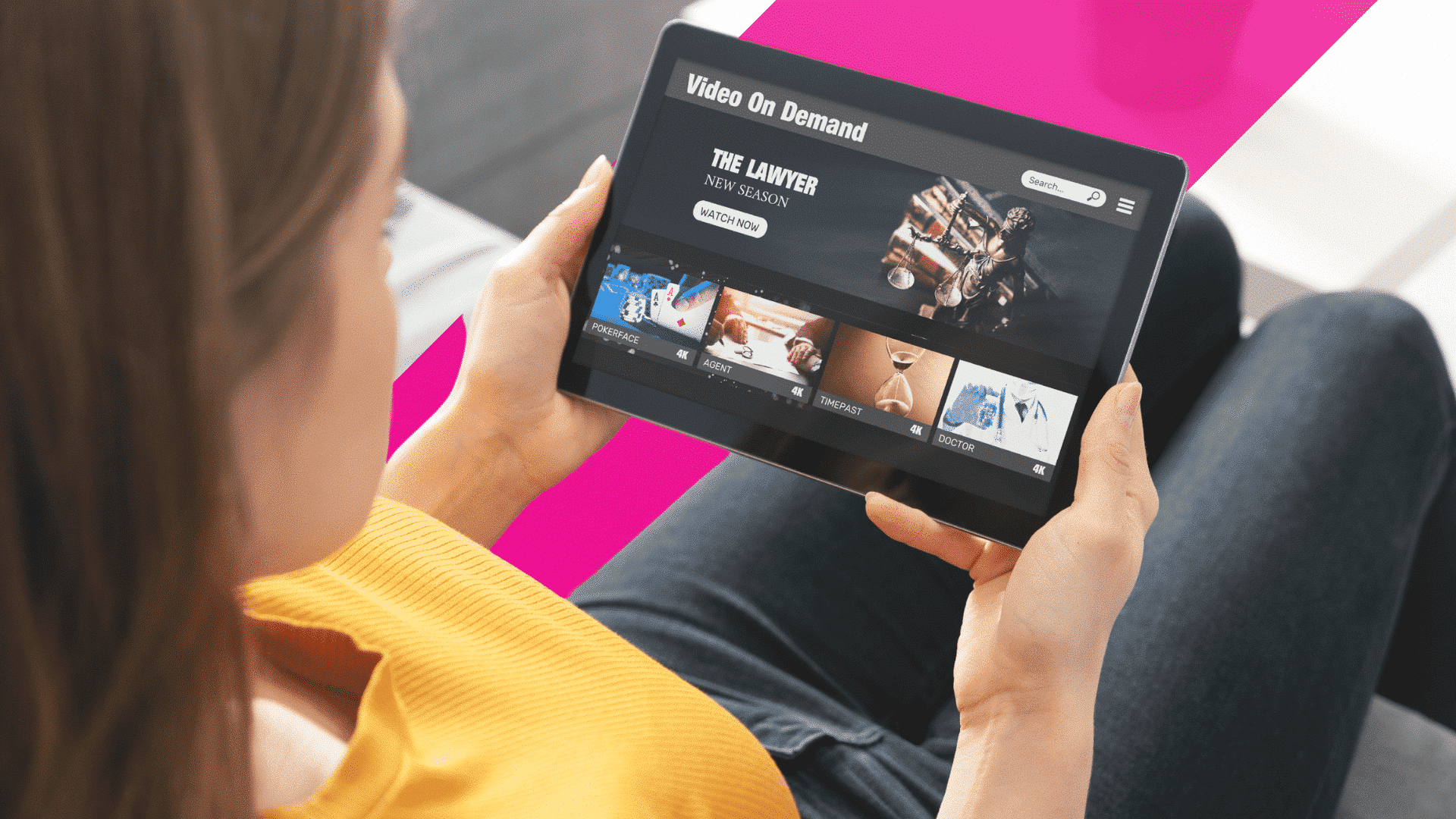In the ever-evolving landscape of television and entertainment, streaming giants have long stood tall against the backdrop of a declining cable and satellite era. Despite the domination of SVODs, challenges continue to threaten – user-generated content, writer’s strikes, and the continuation of the relentless cost-of-living pressures.
Consumer behaviors and demands are changing as the entertainment sector faces a looming storm of financial uncertainty and cultural shifts. In response, Toluna has conducted research to track the economic outlook over the next year, understanding brand perceptions, and forecasting changes in consumer spending.
The results show a notable shift: there is a stronger demand for free streaming services with ads as people look to cut their spending. People report AVOD usage climbing by +2.9% pts in the past 12 months. Can SVOD brands, with their ad supported models, keep the viewer’s attention and loyalty?
Within the SVOD domain, Netflix leads with 44% claiming to use it, followed closely by Prime Video (41%). ITV X takes the lead for BVODs with 44% followed closely by Channel 4 at 41%. The AVOD brand Freevee leads in its category, capturing 15% of the audience share.
However, we are now seeing a landscape change in TV viewership characterised by the rise in the Cost-of-Living. A staggering 1 in 8 individuals state that the financial strain has driven them towards illegal sources of TV viewing, while a third are cutting back on video subscription spend.
This financial concern has led to a reported potential decline in SVOD usage in the next 12 months, especially among its younger audiences (18–34-year-olds) who are dropping out both from ad-free and ad-supported subscriptions.
Looking ahead to next year, there is a shift towards free services and a continued ascent of user-generated media. In fact, the only platforms indicating growth are user-generated TV, favoured particularly among males under 55, and AVODs, among 18-34-year-olds.
AVOD usage, overall, is predicted to be stable over the next 12 months, showing a marginal decrease of just 1% pt.
Both AVODs and user-generated TV operate mostly without subscriptions, which poses a challenge for subscription services. The desire for free on-demand content, even with ads, is a sentiment echoed by 61% of users, underlining just how much the financial pressures are at play. SVODs must now heighten efforts to retain and win back customers who might cut spending in response to the pressures of the Cost-of-Living squeeze.
Such efforts have already begun: The boundaries between SVODs and ad-supported platforms are converging.
SVOD brands have opted to compete for viewership with ad-supported models. Netflix, having just scrapped their cheapest basic ad-free subscription, has kept their lower-cost ad-supported subscription. Meanwhile, Amazon Freevee, launched in 2022, replacing IMDb TV, announced this September their revival of the popular series “Neighbours”; solidifying Amazon’s position in the AVOD realm. This underscores the dynamic nature of the industry where financial considerations and evolving viewer preferences are steering the course.
The shift in the TV streaming market is evident as BVODs are strategically riding the storm of financial concern and positioning themselves well against successful SVOD giants.
The modernisation of ITVs’ BVOD platform ITV X shines as a testament to this. Our study’s findings illustrate how ITV X has emerged as a star brand, leading both in high usage within its category and positive brand perception overall. 35% of people consider the brand ‘on the way up’.
The popularity of ITV X further signifies the broader trend we are seeing with people’s gravitation towards ad-supported models – as a response to financial strains.
BVOD and AVOD services should capitalise on this consumer shift by increasing their brand awareness and perception. They currently have a unique opportunity to not only meet cost-free demands but also shape consumer expectations. The competition here is not just to gain viewership but to ensure sustained loyalty of the brand.
Advertisers should take note: With increased advertising through ad-supported models, the access to premium curated content captures viewers’ attention and presents an opportunity for strategic brand positioning.
All streaming providers still must contend with user-generated platforms such as YouTube and TikTok, which have shown a 9% pt. surge in usage over the past year. This type of content has a particularly strong appeal among the 18–34-year-olds, being their number 1 source of TV viewing.
What sets user-generated platforms apart from the market is their potential to be resilient to current trends in the industry. Not only is there a Cost-of-Living crisis, but there has been the writers strikes impacting both the US and UK, causing delays in production of new shows. With Cost-of-Living making people question their platform choice, payment, and behaviour, a delay in content production may further push people to watch more user-generated content.
Yet, this trend may be less of a threat and more of an opportunity. Now more than ever, platforms should harness the use of second screening and target apps such as TikTok to strategically engage and guide consumers to their streaming services.
As the market further embraces user generated content, and ad supported streaming intensifies, the TV industry is in a flexible state, constantly vulnerable to looming macro factors. Capitalising on these trends, and utilising social media, content creation, and technology in new ways to aid customer engagement, is integral to staying ahead of the curve.
Definitions used:
SVOD = Paid video streaming services (e.g., Netflix, Prime Video);
AVOD = Free video streaming services with ads (e.g., Freevee, Pluto);
BVOD = Video streaming services offered by Broadcast TV companies (e.g., ITVX, All4)




